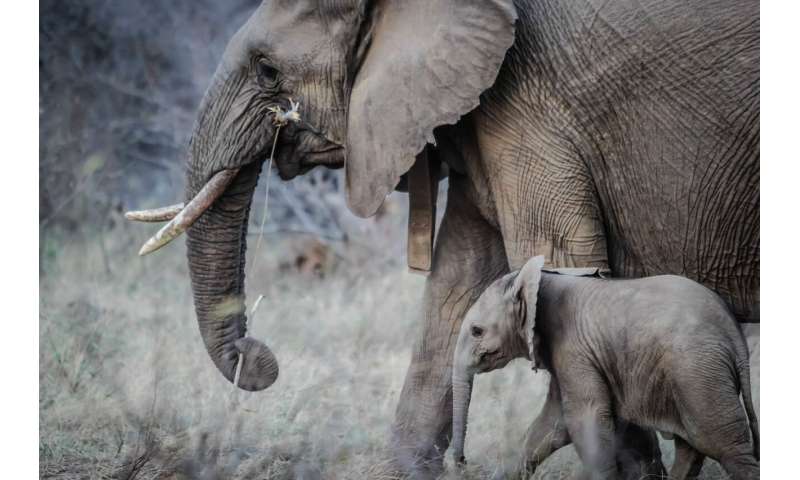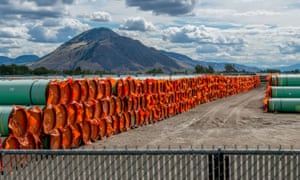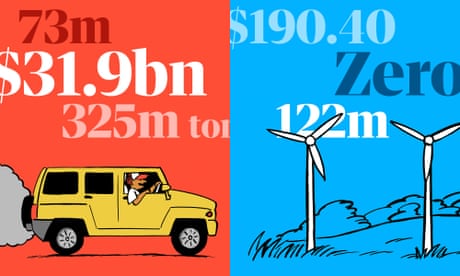THERE IS NO CLEAN COAL
Nanoparticles produced from burning coal result in damage to mice lungs, suggesting toxicity to humans

Virginia Tech scientists have discovered that incredibly small particles of an unusual and highly toxic titanium oxide found in coal smog and ash can cause lung damage in mice after a single exposure, with long-term damage occurring in just six weeks.
The tests were headed by Irving Coy Allen, a professor with the Virginia-Maryland College of Veterinary Medicine, with collaborators from across Virginia Tech and researchers at the University of Colorado, the University of North Carolina at Chapel Hill, East Carolina University, and East China Normal University in Shanghai. The findings were recently published in the scientific journal Frontiers in Immunology.
They follow 2017 findings by Virginia Tech geoscientist Michael Hochella that burning coal—when smoke is not captured by high-end filters currently found in U.S. power plants—emits tiny particulates known as titanium suboxide nanoparticles into the atmosphere. Such nanoparticles were found by Hochella's team of scientists in ash collected from the city streets, sidewalks, and in ponds and bays near U.S. and Chinese cities.
Using mouse models in a lab setting, these tiniest of nanoparticles—as small as 100 millionths of a meter—entered the lungs after being inhaled. Once inside the lungs, the nanoparticles encountered macrophages, the lungs' defensive cells that trap and remove foreign materials. Typically, these cells protect the lungs from pathogens, such as bacteria and viruses. But against these nanoparticles, the macrophages falter.
 |
| 100 YEARS AGO |
"They can't break the titanium nanoparticles down, so the cells begin to die, and this process recruits more macrophages. These processes begin a feedback loop with each round of dying cells concentrating around the nanoparticles," said Allen, a member of the Department of Biomedical Sciences and Pathobiology. "The dying, nanoparticle-containing cells then begin making deposits in the lungs and these deposits cause problems. We begin seeing negative impacts on lung function, and basically the lungs fail to continue to work correctly."
In what Allen calls a "striking find," his team discovered negative effects after only one exposure to the toxic nanoparticles. Long-term damage from the deposits can appear in as little as six weeks, raising concerns for highly polluted cities. "We realized if someone is living near a power plant, or near one of these coal burning sources, they wouldn't be exposed to a single dose, they'd be exposed to this daily," he said. "We also did not see lung clearance after a week, so when these things are in your lungs they are staying there, and they are staying there for an extended period of time."
More so, damaged lungs can lead to higher susceptibility to virus or bacterial infection, and could worsen symptoms associated with asthma or chronic obstructive pulmonary disease (COPD).
However, the exact effects of these toxic nanoparticles on humans, other animals, vegetation, and water systems are not known and demand further study by international researchers, Allen said.
"Mouse and human lungs are functionally similar, but anatomically different in a variety of subtle ways," Allen added. "While the studies done in this paper are commonly utilized to model airway disorders in people, more direct clinical data are necessary to fully understand the human impact of exposure to these nanoparticles."
The titanium suboxide nanoparticles—called Magnéli phases by researchers—were once thought rare, found on Earth in some meteorites, from a small area of certain rocks in western Greenland, and occasionally in moon rocks. However, Hochella, working with other researchers in 2017, found that these nanoparticles are in fact widespread globally from the burning of coal.
According to the earlier study, published in Nature Communications, nearly all coal contains small amounts of the minerals rutile or anatase, both "normal," naturally occurring, and relatively inert titanium oxides. But when burnt, these minerals convert to titanium suboxide. The nanoparticles then become airborne if the power plant is not equipped with high-tech particle traps, such as those in the United States. For countries without strict regulations, the nanoparticles can float away in air currents locally, regionally, and even globally, Hochella said. (He added that the United States first started using electrostatic precipitators on coal stacks in the 1920s.)
Early biotoxicity studies by Hochella's group with zebra fish embryos showed signs of negative biological impact from the nanoparticles, suggesting potential harm to humans. Now, with this study, the odds of toxicity to humans are much greater. "The problem with these nanoparticles is that there is no easy or practical way to prevent their formation during coal burning," said Hochella, University Distinguished Professor Emeritus of Geosciences with the Virginia Tech College of Science, upon the earlier study's release two years ago.
Hochella and his team came across the titanium suboxide nanoparticles quite by accident while studying the downstream movement of a 2014 coal ash spill in the Dan River of North Carolina. The group later produced the same titanium suboxide nanoparticles when burning coal in lab simulations. This potential health hazard builds on established findings from the World Health Organization: More than 3.3 million premature deaths occurring worldwide per year due to polluted air, and in China alone, 1.6 million premature deaths are estimated annually due to cardiovascular and respiratory injury from air pollution.
This raises multiple questions: Are the nanoparticles absorbed through the body by other means, such as contact with eyes or skin? Can they find their way into vegetation—including food—though soil? If so, what are the implications on the gastrointestinal tract? Are they present in drinking water? If a mouse experiences long-term damage at six weeks, what does that pose for humans who breathe the air?
Allen urges that testing move to human-focused studies.
"We've identified a unique pollutant in the environment, and we've shown there's a potential health concern for humans, so that gives us a biomarker that we can monitor more closely," he said. "We should begin looking at these particulates more closely as we become more aware of the hazards these nanoparticles pose. These are questions that need to be asked."
That path, while obvious, may not be so simple, ethically or politically. Scientists can't expose human test subjects to coal smog or ash and the toxic nanoparticles. Therefore, a likely scenario: scientists could study these particles in human lung tissue from lung biopsies and clinical specimens. However, many clinicians have been reluctant to take part in this effort in many of the countries at the most risk. Allen said one reason may be the sensitivity that these countries hold toward air-quality issues.
More information: Dylan K. McDaniel et al. Pulmonary Exposure to Magnéli Phase Titanium Suboxides Results in Significant Macrophage Abnormalities and Decreased Lung Function, Frontiers in Immunology (2019). DOI: 10.3389/fimmu.2019.02714















